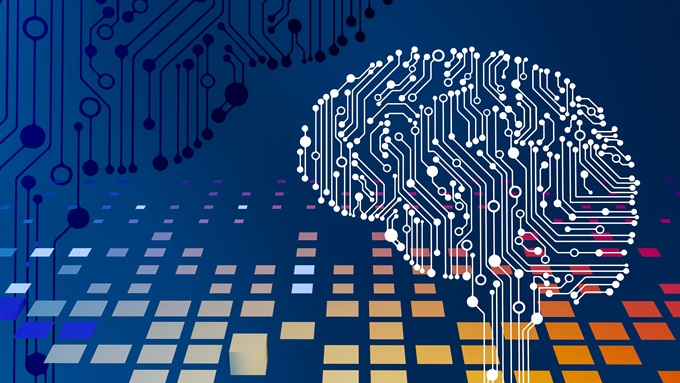Artificial Intelligence in Anatomy Education

Downloads
Highlights
- Review of the potential use of AI in anatomy education, including any weaknesses or threats associated with integrating AI into anatomy teaching.
- Recommendations for incorporating AI in anatomy education within medical curricula.
ABSTRACT
Background: Artificial intelligence (AI) refers to machines capable of performing human tasks and exhibiting intelligent behavior. The application of AI in medical education has increased significantly, especially during the COVID-19 pandemic, as remote teaching became widespread across all medical disciplines, including anatomy. Objective: This narrative review aimed to explore the potential use of AI in anatomy education and to identify any associated weaknesses or threats related to its integration. Material and Method: A systematic literature search was conducted using PubMed and Embase (limited to the past 5 years), and Google Scholar (limited to the past 2 years), employing keywords related to "artificial intelligence" and "anatomy education". Inclusion criteria were randomized controlled trials and review articles focusing on AI tools in anatomy education, published in English and freely accessible. Exclusion criteria included abstract-only publications, non-human studies, and studies not specifically related to anatomy education. Of the 3,298 articles identified, seven met the inclusion criteria. Result: Seven articles fulfilled the inclusion criteria. The reviewed literature explored AI applications in anatomy education, highlighting innovations such as blended learning, automated assessments, and digital platforms. Overall, AI demonstrates potential to improve teaching effectiveness and student engagement. However, successful implementation requires strategic planning, adequate infrastructure, and a solid pedagogical framework. Conclusion: AI has emerged as a valuable tool in anatomy education, enhancing learning outcomes, accessibility, and instructional flexibility. Nonetheless, its integration must be carefully managed to overcome current limitations and ensure equitable, effective, and sustainable educational practices.
Abdellatif, H., Al Mushaiqri, M., Albalushi, H., Al-Zaabi, A. A., Roychoudhury, S., & Das, S. 2022. Teaching, learning and assessing anatomy with artificial intelligence: The road to a better future. International Journal of Environmental Research and Public Health, 19(21), 14209. doi: 10.3390/ijerph192114209.
Adnan, S., & Xiao, J. 2023. A scoping review on the trends of digital anatomy education. Clinical Anatomy, 36(3), 471–491. doi: 10.1002/ca.23995.
Ahmad, S. F., Rahmat, M. K., Mubarik, M. S., Alam, M. M., & Hyder, S. I. 2021. Artificial intelligence and its role in education. Sustainability, 13(22), 12902. doi: 10.3390/su132212902.
Ajani, O. A., Gamede, B., & Matiyenga, T. C. 2024. Leveraging artificial intelligence to enhance teaching and learning in higher education: Promoting quality education and critical engagement. Journal of Pedagogical Sociology and Psychology, 7(1), 54–69. doi: 10.33902/jpsp.202528400.
Asghar, A., Patra, A., & Ravi, K. S. 2022. The potential scope of a humanoid robot in anatomy education: A review of a unique proposal. Surgical and Radiologic Anatomy, 44(10), 1309–1317. doi: 10.1007/s00276-022-03020-8.
Awad, P., & Oueida, S. 2024. The potential impact of artificial intelligence on education: Opportunities and challenges. In Lecture notes in networks and systems (pp. 566–575). Springer. doi: 10.1007/978-3-031-53963-3_39.
Bernard, J., Sonnadara, R., Saraco, A. N., Mitchell, J. P., Bak, A. B., Bayer, I., & Wainman, B. C. 2024. Automated grading of anatomical objective structured practical examinations using decision trees: An artificial intelligence approach. Anatomical Sciences Education, 17(5), 967–978. doi: 10.1002/ase.2305.
Bhattarai, L., KC, S., Shrivastava, A. K., & Sah, R. P. 2022. Importance of cadaveric dissection in learning anatomy for medical students: A review. Med Phoenix, 6(2), 68–72. doi: 10.3126/medphoenix.v6i2.38744.
Broadbent, J., Ajjawi, R., Bearman, M., Boud, D., & Dawson, P. 2023. Beyond emergency remote teaching: Did the pandemic lead to lasting change in university courses? International Journal of Educational Technology in Higher Education, 20(1), 58. doi: 10.1186/s41239-023-00428-z.
Burney, I. A., & Ahmad, N. 2022. Artificial intelligence in medical education: A citation-based systematic literature review. Journal of Shifa Tameer-e-Millat University, 5(1), 43–53. doi: 10.32593/jstmu/Vol5.Iss1.183.
Chan, K. S., & Zary, N. 2019. Applications and challenges of implementing artificial intelligence in medical education: Integrative review. JMIR Medical Education, 5(1), e13930. doi: 10.2196/13930.
Chen, X., Xie, H., Zou, D., & Hwang, G.-J. 2020. Application and theory gaps during the rise of artificial intelligence in education. Computers and Education: Artificial Intelligence, 1, 100002. doi: 10.1016/j.caeai.2020.100002.
Imran, M., Almusharraf, N., & Abbasova, M. Y. 2025. Digital learning transformation: A study of teachers’ post-Covid-19 experiences. Social Sciences & Humanities Open, 11, 101228. doi: 10.1016/j.ssaho.2024.101228.
Khalil, M. K., Abdel Meguid, E. M., & Elkhider, I. A. 2018. Teaching of anatomical sciences: A blended learning approach. Clinical Anatomy, 31(3), 323–329. doi: 10.1002/ca.23052.
Kushwaha, A., Kushwaha, R. K., & Ahmad, S. 2024. Transforming Learning: The Power of Educational Technology (S. Ahmad, M. I. Hussain, M. Mustaqeem, & R. K. Kushwaha (eds.)). Bluerose Publisher. Available at: https://www.researchgate.net/publication/381408076_ Transforming_Learning_The_Power_of_Educational_Technology.
Lazarus, M. D., Truong, M., Douglas, P., & Selwyn, N. 2024. Artificial intelligence and clinical anatomical education: Promises and perils. Anatomical Sciences Education, 17(2), 249–262. doi: 10.1002/ase.2221.
Patil, S., & Shankar, H. 2023. Transforming healthcare: Harnessing the power of AI in the modern era. International Journal of Multidisciplinary Sciences and Arts, 2(2), 60–70. doi: 10.47709/ijmdsa.v2i1.2513.
Patra, A., Asghar, A., Chaudhary, P., & Ravi, K. S. 2022. Integration of innovative educational technologies in anatomy teaching: New normal in anatomy education. Surgical and Radiologic Anatomy, 44(1), 25–32. doi: 10.1007/s00276-021-02868-6.
Quek, F. F. 2024. Revolutionising anatomy education: The current role of digital technologies in enhancing anatomy learning for undergraduate medical students. Cureus. doi: 10.7759/cureus.75919.
Ramadan, O. M. E., Alruwaili, M. M., Alruwaili, A. N., Elsehrawy, M. G., & Alanazi, S. 2024. Facilitators and barriers to AI adoption in nursing practice: A qualitative study of registered nurses’ perspectives. BMC Nursing, 23(1), 891. doi: 10.1186/s12912-024-02571-y.
Rangareddy, H., & Nagaraj, S. K. 2022. Artificial intelligence and healthcare. Journal of Clinical and Diagnostic Research. doi: 10.7860/JCDR/2022/56148.17020.
Silva, M. A. da, & Nanamura, M. H. S. 2024. The impact of new technologies on medical education. In Medicine: an exploration of the anatomy of the human body. Seven Editora. doi: 10.56238/sevened2024.005-026.
Tricco, A. C., Lillie, E., Zarin, W., O’Brien, K. K., Colquhoun, H., Levac, D., Moher, D., Peters, M. D. J., Horsley, T., Weeks, L., Hempel, S., Akl, E. A., Chang, C., McGowan, J., Stewart, L., Hartling, L., Aldcroft, A., Wilson, M. G., Garritty, C., … Straus, S. E. 2018. PRISMA extension for scopingrReviews (PRISMA-ScR): Checklist and explanation. Annals of Internal Medicine, 169(7), 467–473. doi: 10.7326/M18-0850.
Wang, S., Wang, F., Zhu, Z., Wang, J., Tran, T., & Du, Z. 2024. Artificial intelligence in education: A systematic literature review. Expert Systems with Applications, 252, 124167. doi: 10.1016/j.eswa.2024.124167.
Wickramasinghe, N., Thompson, B. R., & Xiao, J. 2022. The opportunities and challenges of digital anatomy for medical sciences: Narrative review. JMIR Medical Education, 8(2), e34687. doi: 10.2196/34687.
Copyright (c) 2025 Elies Fitriani, Hanifah Hanifah, Khoirul Ima, Mahfudz Shiddiq , Miko Dharma Alrasyid , Tjahja Nurrobi

This work is licensed under a Creative Commons Attribution 4.0 International License.
1. The journal allows the author(s) to hold the copyright of the article without restrictions.
2. The journal allows the author(s) to retain publishing rights without restrictions.
3. The legal formal aspect of journal publication accessibility refers to Creative Commons Attribution 4.0 International License (CC-BY).
































